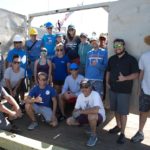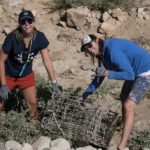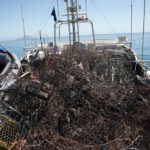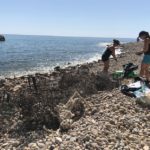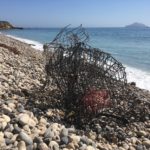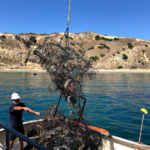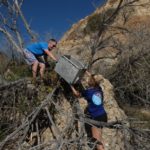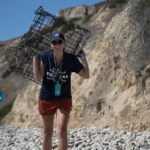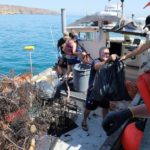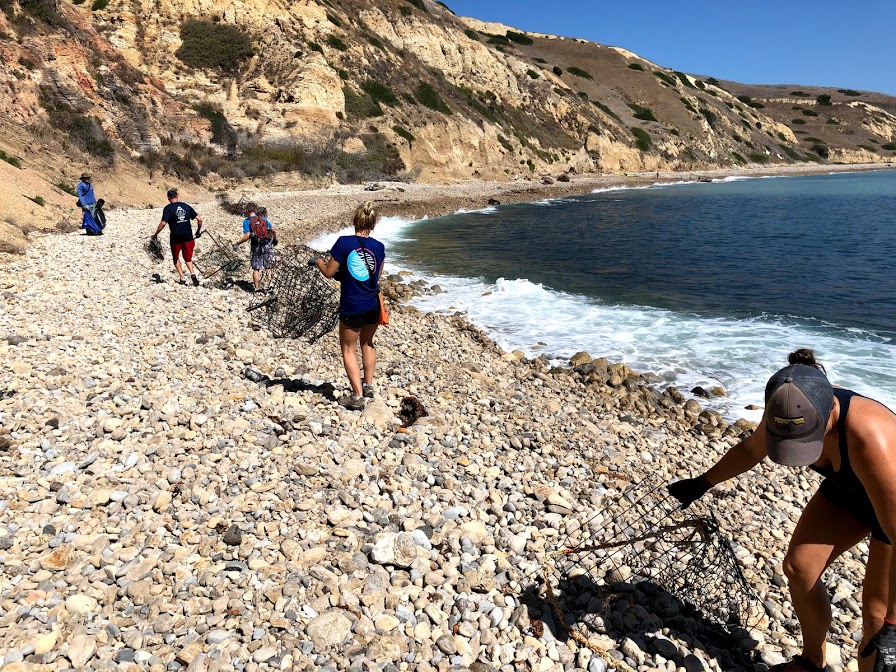
Channel Islands cleanup tackles 2,300 lbs. of marine debris
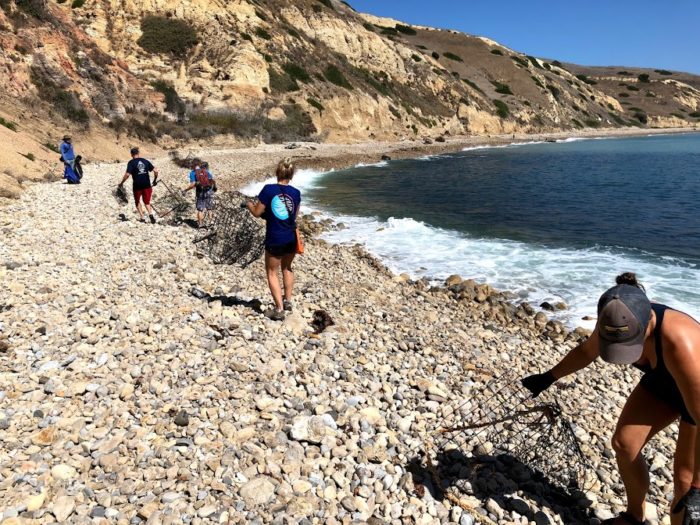
Photo credit: Sherry Lippiatt
On International Coastal Cleanup Day (Saturday, September 21, 2019), 21 volunteers and Channel Islands National Marine Sanctuary partners, including National Marine Sanctuary Foundation Conservation Manager Kayleigh Michaelides, boarded the R/V Shearwater headed out to sea for Santa Cruz Island on a marine debris cleanup mission.
The Channel Islands are located between twelve and seventy miles off the coast of California, extend 150 miles along, and their uninhabited coastlines are home to a variety of diverse, and sometimes threatened, species and habitats. The surrounding waters are home to a remarkable amount of sea life, some of California’s most productive fishing grounds, and sensitive rocky intertidal and coastal beach habitat.
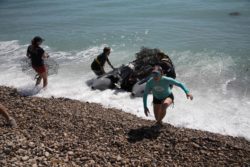
Photo credit: Cliff Rodrigues
While seemingly out of reach from the mainland, marine debris is a persistent problem on and around the islands due to a variety of factors including their proximity to the highly populated mainland, robust commercial and recreational fisheries, international commercial shipping lanes, and other oceanographic factors. A variety of marine debris types can be found on the Channel Islands including plastic and styrofoam materials, lost fishing gear (nets, ropes, and traps), and even microplastics.
Removal of marine debris and lost fishing gear from the Channel Islands not only helps prevent or diminish damage to the sensitive shoreline and coastal habitats, but benefits the valuable California spiny lobster commercial fishery by reducing ghost fishing and reduces the chance of marine life entanglement or entrapment in debris or fishing gear.
Volunteers arrived at the Santa Barbara Harbor at 6:30 am to get suited up for the R/V Shearwater’s voyage to the Channel Islands. After about an hour and a half ride, the crew arrived at Yellow Banks, a one-mile long cobblestone beach on Santa Cruz Island with variable swell and a moderately steep shoreline. From the R/V Shearwater, the volunteers accessed Yellow Banks via kayaks, paddleboard, and skiff. A group of local spiny lobster commercial fishermen volunteered their time and fishing vessels to assist in the removal efforts and met the group by the island.
Once onshore, volunteer teams split up with safety gear and data sheets in hand, ready to remove and record any debris found on the shoreline. After about three hours of rigorous beachcombing and digging out heavy fishing gear (primarily lobster traps) buried under sand and rocks, volunteers assembled bags of marine debris and lost lobster traps into piles for collection and transportation back to the R/V Shearwater. In order to get the marine debris and lost fishing gear off the beach, the traps and bags of debris were attached to line on a pulley system connected to the lobstermen’s boats and shimmied across the shallow wave breaks until they reached the fishermen’s vessels. Debris and traps were also transported back on the skiff where shorelines access was possible, and all debris and traps were transferred from the fishermen’s vessels or skiff to the R/V Shearwater’s top deck via a crane on the research vessel.
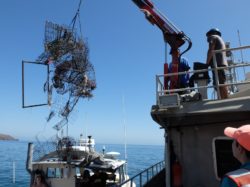
Photo credit: Shawn Choy
Loaded up with all of the volunteers and the 2,300 lbs. of marine debris removed from Yellow Banks, the R/V Shearwater cruised back to harbor escorted by a pod of common dolphins who played on the vessel’s bow. Once back at harbor, the debris and the nearly 50 lobster traps removed from Santa Cruz Island were craned off the R/V Shearwater into a dumpster for weighing and disposal. Where possible, some of the plastic and aluminum debris removed from Yellow Banks was recycled, and all data was recorded and reported back to organizers for California Coastal Cleanup Day across Santa Barbara County.
Funding for this marine debris cleanup was provided to Channel Islands National Marine Sanctuary by a NOAA Marine Debris Program grant award.
- Photo credit: Cliff Rodrigues
- Photo credit: Cliff Rodrigues
- Photo credit: Cliff Rodrigues
- Photo credit: Kayleigh Michaelides
- Photo credit: Laura Ingulsrud
- Photo credit: Sherry Lippiatt
- Photo credit: Shawn Choy
- Photo credit: Cliff Rodrigues
- Photo credit: Shawn Choy

